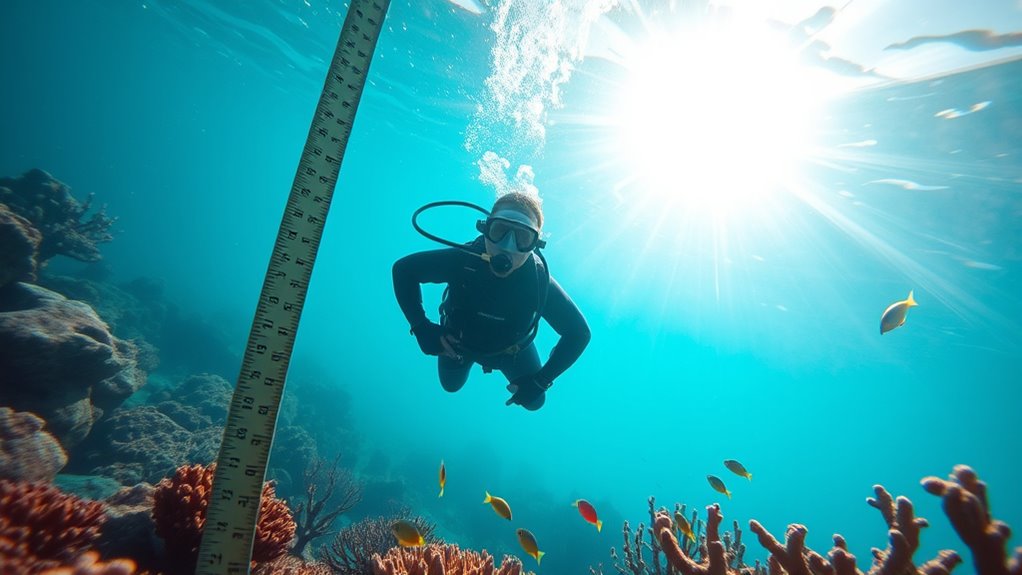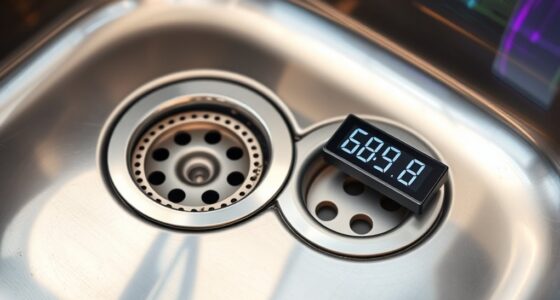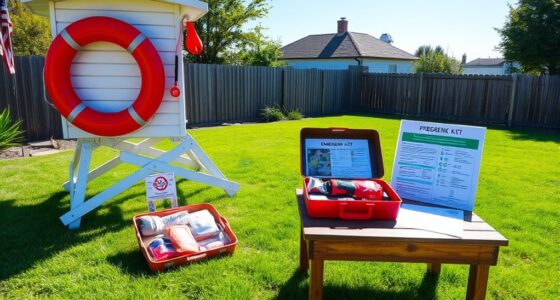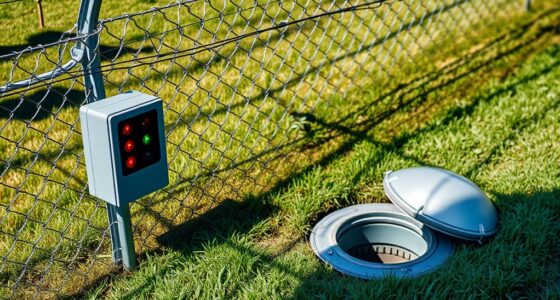Your safe diving envelope involves staying within certain depths and distances to prevent injuries like decompression sickness or nitrogen narcosis. Typically, recreational divers limit themselves to around 130 feet (40 meters), following specific dive profiles and no-decompression limits. Managing ascent rates, safety stops, and monitoring your gas levels are vital for safety. By understanding these boundaries and respecting your limits, you can enjoy safer dives. Keep exploring how proper planning keeps you within safe parameters.
Key Takeaways
- Maintain depths within recreational limits, typically up to 130 ft (40 m), to reduce decompression and narcosis risks.
- Follow dive profiles and limits, including maximum bottom times and ascent rates, to stay within safe exposure boundaries.
- Adhere to no-decompression limits, avoiding extended bottom times that increase decompression sickness risk.
- Ascend slowly at about 30 ft (9 m) per minute and include safety stops at 15 ft (5 m) to safely off-gas nitrogen.
- Use proper equipment and monitor depth and distance to ensure safe margins and prevent injury during the dive.
Understanding Safe Diving Depths
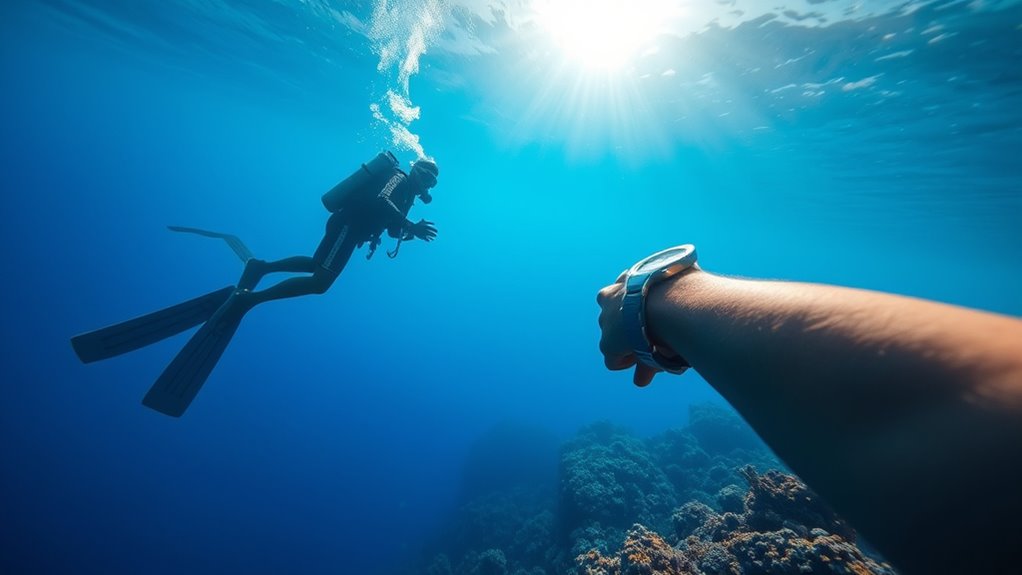
Understanding safe diving depths is essential for ensuring your safety underwater. When you dive, knowing your limits helps prevent dangerous situations like decompression sickness or nitrogen narcosis. The recommended maximum depth for recreational diving is usually around 130 feet (40 meters), but this varies based on your training and experience. Always respect your personal limits and the conditions of the dive site. Factors such as your physical fitness, equipment, and comfort level influence how deep you should go. Remember, deeper dives increase risks, so it’s vital to plan accordingly and stay within safe boundaries. Monitoring your depth with a dive computer or depth gauge keeps you informed and helps you avoid accidental overexposure to hazardous conditions. Sector performance metrics are also useful in understanding industry trends that could inform safer diving practices and equipment investments.
The Role of Dive Profiles and Limits
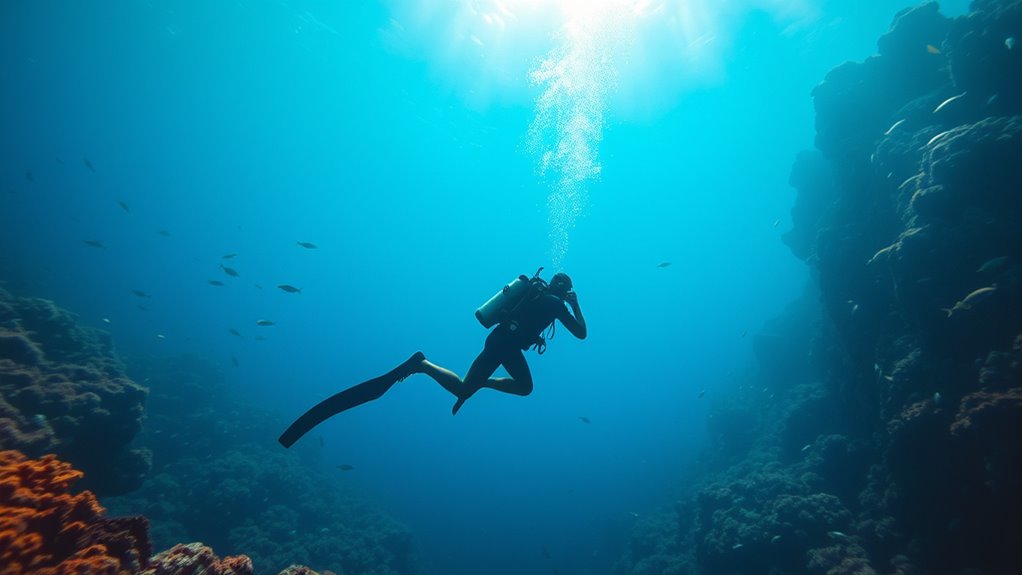
Dive profiles and limits are essential tools for managing your safety and optimizing your diving experience. They help you plan your ascent, depth, and bottom time, reducing risks like decompression sickness. Your dive profile charts your depth over time, ensuring you stay within safe limits. By respecting these limits, you prevent overexertion and avoid pushing past your body’s capabilities. Consider this example:
| Depth (meters) | Time at Depth (min) | Ascent Rate (m/min) |
|---|---|---|
| 20 | 30 | 9 |
| 30 | 20 | 6 |
| 40 | 15 | 4 |
| 50 | 10 | 3 |
| 60 | 8 | 2 |
Following these profiles keeps your dives safe, controlled, and enjoyable.
Recognizing and Respecting No-Decompression Limits
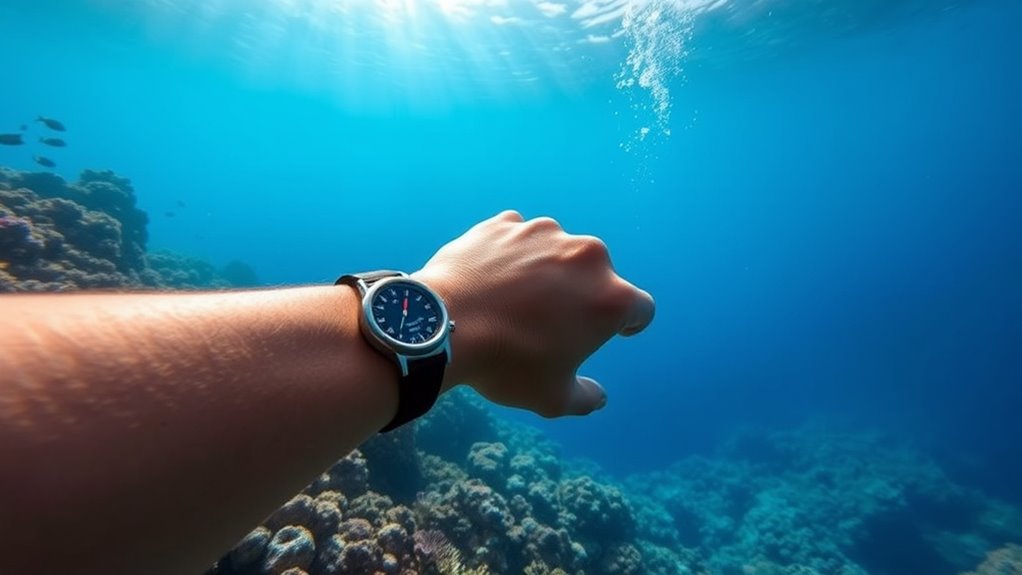
Knowing and staying within your no-decompression limits is essential for safe diving. These limits are the maximum amount of time you can spend at a certain depth without needing to perform mandatory decompression stops during ascent. Exceeding this limit increases the risk of decompression sickness, which can cause serious injury. To recognize your limits, always plan your dive carefully using dive tables or a dive computer, and monitor your depth and time throughout the dive. Be aware of your personal comfort and response to the dive; if you approach your limit, consider adjusting your dive or ending it early. Respect these limits strictly, as they are designed to protect you from dangerous decompression issues and ensure a safer, more enjoyable diving experience. Utilizing dive planning tools can help you accurately track your exposure and stay within safe limits.
Managing Ascent Rates and Safety Stops
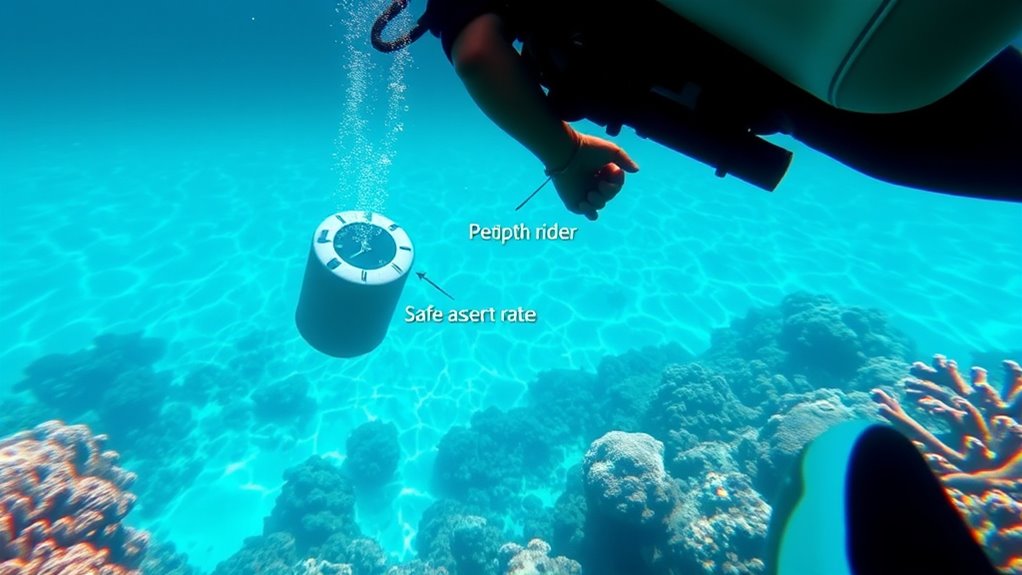
Why is controlling your ascent rate crucial for safe diving? Ascending too quickly can cause decompression sickness, lung over-expansion injuries, or other serious health issues. By maintaining a slow, steady ascent—around 30 feet (9 meters) per minute—you give your body time to eliminate dissolved gases safely. Incorporate safety stops, typically at 15 feet (5 meters) for three to five minutes, to further reduce risks. These pauses allow excess nitrogen to off-gas, decreasing the chance of bubbles forming in your tissues. Always monitor your depth and ascent speed closely, especially as you approach the surface. Staying within recommended rates and including safety stops helps you manage your nitrogen levels effectively, ensuring a safer, more comfortable return to the surface. Proper ascent techniques are essential for minimizing health risks associated with diving.
Using Equipment and Planning to Stay Within Envelopes
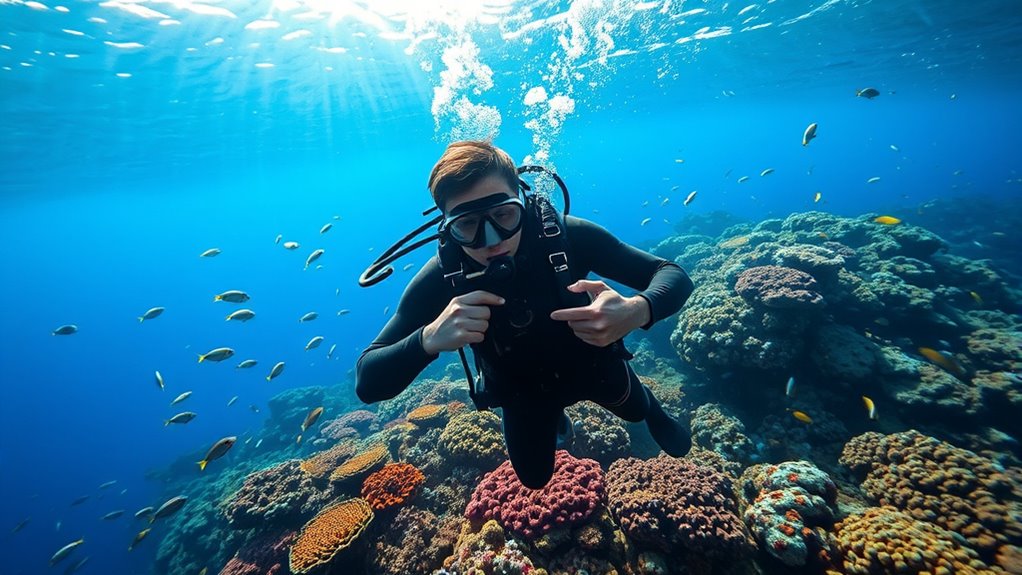
Proper equipment and careful planning are essential for staying within your diving envelopes and ensuring safety. Before diving, check your gear thoroughly—regulators, gauges, and buoyancy devices—to avoid surprises underwater. Use a dive plan that includes maximum depths, times, and ascent rates, tailoring it to your experience level. Always monitor your depth and air supply continuously, adjusting your actions as needed. Prioritize safety stops and respect your limits to prevent accidents. Remember, your equipment is your safety net, so keep it in top condition. Understanding depth and distance limitations is crucial for preventing injuries and ensuring a safe dive.
- Feel the thrill of safe exploration, knowing you’re prepared.
- Avoid panic by sticking to your plan with confidence.
- Trust your gear to support your adventure.
- Experience peace of mind at every depth.
- Safeguard your passion for diving for years to come.
Frequently Asked Questions
How Does Individual Health Affect Safe Diving Depths?
Your individual health profoundly impacts safe diving depths. If you have respiratory or cardiovascular issues, you might not tolerate profound dives well, increasing the risk of injury or complications. Poor physical fitness can also lead to fatigue, making you more prone to accidents. Always consult your doctor before diving, especially if you have health concerns, and stay within your personal limits to guarantee a safe and enjoyable diving experience.
What Are the Signs of Approaching Decompression Sickness?
You might suddenly feel a crushing headache, like an elephant sitting on your skull, or a tingling sensation spreading through your limbs as if tiny sparks are dancing on your skin. You could also experience dizziness, nausea, or confusion, making you feel as if you’re losing your grip on reality. These are your warning signs of approaching decompression sickness—act quickly, ascend slowly, and seek immediate medical help to prevent serious injury.
Can Divers Safely Extend Their Limits With Special Training?
Yes, you can safely extend your limits with proper training. Specialized courses teach you how to manage risks, use advanced equipment, and recognize warning signs early. With this knowledge, you can push your boundaries while minimizing dangers. Always follow your training guidelines, communicate with your dive buddy, and stay within your certified limits. Remember, proper preparation and awareness are key to safe, enjoyable extended dives.
How Do Water Conditions Influence Safe Diving Envelopes?
Water conditions act as the silent gatekeeper of your diving envelope, shaping what’s safe and what’s risky. If currents are strong, they tug at your limits, demanding you stay within your comfort zone. Poor visibility clouds your judgment, much like fog obscuring a clear path. Temperatures influence your stamina, reminding you to respect your body’s signals. Adapt your dive plan to these elements, and you safeguard your journey beneath the waves.
What Are the Risks of Ignoring Recommended Dive Profiles?
Ignoring recommended dive profiles substantially increases your risk of decompression sickness, nitrogen narcosis, and oxygen toxicity. When you exceed depth or time limits, your body can’t safely eliminate dissolved gases, which can lead to serious health issues or even death. Always follow the profiles provided by your training and dive computers, and never push beyond recommended limits. Staying within the guidelines keeps you safe and helps ensure a fun, injury-free dive.
Conclusion
By understanding safe diving depths and respecting your limits, you create a protective shield around yourself underwater. Think of your dive plan as a map guiding you through uncharted waters, keeping you safe from hidden dangers. When you manage your ascent rates, stick to safety stops, and use your gear wisely, you stay within the envelope of safety. Dive smart, stay aware, and enjoy the ocean’s wonders without risking your well-being.
